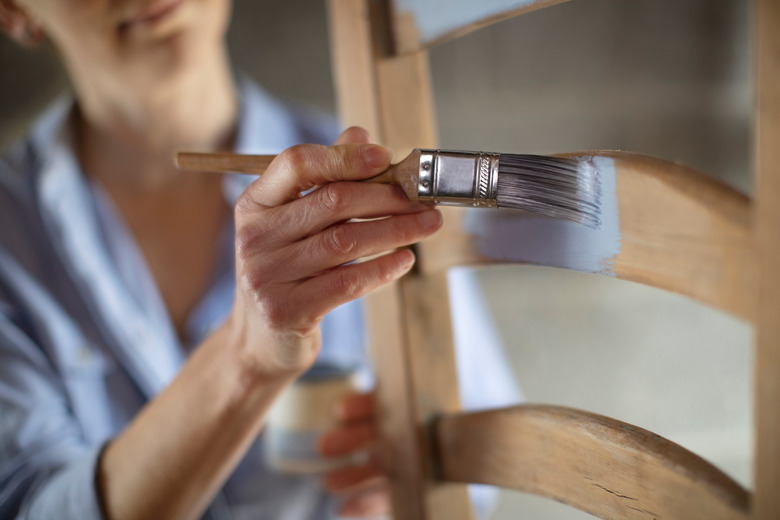How To Remove Oil-Based Paint Without Paint Thinner
If you've ever worked with oil-based paint, you know how challenging it is to remove from wood, metal, and masonry. In the past, it was believed that the only way to strip oil-based paint from these types of surfaces was to use hard-core solvent-based chemicals. Given that the active ingredients in these products are toxic, working with them can potentially impose health risks.
Take heart! There are now safer alternatives that can strip oil paint effectively. Citrus-based paint solvents, made from citrus peel extract, break down the structure of oil-based paint but with less toxicity and noxious fumes. Soy-based gels (distilled from soybean oil) come in nondrip formulas that are especially good on vertical surfaces, including furniture and cabinets. Find citrus- and soy-based strippers online or at your local hardware store or home-improvement center.
Whether you want to restore an old chair, refinish kitchen cabinets, or repaint wrought-iron railings, nonpetroleum strippers do an excellent job at dissolving oil-based paint without smelly, unhealthy, and environmentally damaging effects.
Things Needed
-
Eye goggles
-
Sanding block
-
Small container
-
Paint brush
-
Plastic wrap
-
Rag
How to Remove Oil-Based Paint Without Paint Thinner
1. Protect Yourself
Put on protective gloves to avoid skin contact and eye goggles in case of splashing. Even with low VOCs, off-gassing can still occur so be sure the area you're working in is well ventilated.
Tip
When sourcing natural, oil-based paint solvents, don't forget to try art supply stores. They're a great resource, and the staff is often highly knowledgeable about paint removal methods.
2. Sand, Shake, and Pour
Scuff the piece lightly with a sanding block to help the citrus stripper penetrate the surface. Shake the container of citrus/soy stripper well and pour some into a small container.
3. Apply Remover Generously
Use a paint brush to apply a thick coat of the stripper all over the item and leave it to eat away at the paint (anywhere between 30 minutes and 24 hours, depending on the number of layers of paint you're removing). To prevent the product from drying out if you let it sit for long periods or overnight, you can cover the area with plastic wrap. Now, wait for the stripper to do its magic.
4. Scrape Off Paint
Remove the plastic wrap after the allotted time (if you used it), and with a plastic putty knife, gently scrape off all the layer(s) of citrus and paint, going in the direction of the grain.
5. Wipe Down and Dry
Douse a rag with low-odor mineral spirits and wipe down the surface of the piece to clean away any remaining product. If there are areas where paint still remains, repeat steps 3 through 5 as needed. Let the surface dry overnight and it's ready for refinishing.
Warning
Before using any household-cleaning product, always read and follow the instructions on the label.
